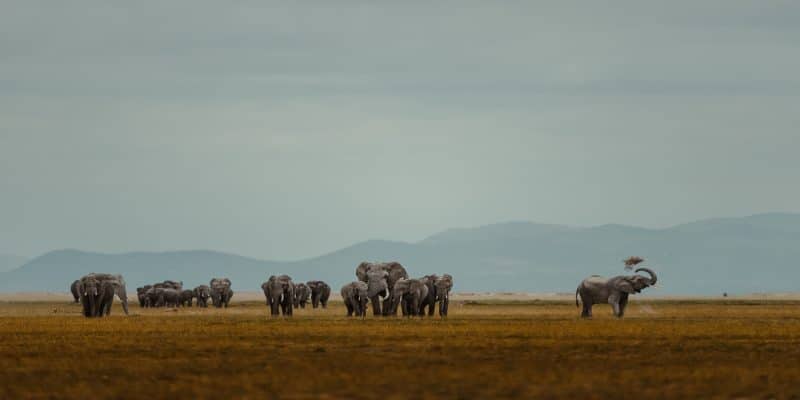The 2023 survey report on elephants in the Kavango-Zambèze Transfrontier Area (KAZA) shows that elephant populations there are stable. In this region of southern Africa, which includes Angola, Botswana, Namibia, Zambia and Zimbabwe, the elephant population is estimated at 227,900 individuals.
The International Fund for Animal Welfare (Ifaw) has just published the first-ever synchronised and comprehensive survey of elephants, carried out in the Kavango-Zambèze Transfrontier Area (KAZA). This region of southern Africa includes Angola, Botswana, Namibia, Zambia and Zimbabwe.
According to the survey, elephant populations there are stable, and are estimated at 227,900 individuals. In detail, the study counts 5,983 pachyderms in Angola, 131,909 in Botswana, 21,090 in Namibia, 3,840 in Zambia and 65,028 in Zimbabwe. Only the elephant population in Zambia has declined.
“These results are very satisfying, and we congratulate the KAZA Transfrontier Conservation Area Secretariat, the States and their partners for their joint efforts to maintain stable elephant populations despite the threats posed by climate change, habitat loss and poaching,” says Philip Kuvawoga, Ifaw’s programme manager for habitat conservation.
“This rigorous survey provides an important basis for assessing the effectiveness of our joint efforts to secure a future for the region’s elephants and the human populations that live alongside them. While this is positive news, we must continue to address the growing challenges of habitat connectivity and human-elephant coexistence, and ensure that conservation actions support those who live in contact with the wildlife of this region,” adds Philip Kuvawoga.
Read also-ZIMBABWE: seven orphaned elephant calves return to the wild
With a surface area of 520,000 km2, around five times the size of Switzerland, the KAZA transboundary conservation area is the largest network of protected areas in Africa. The region is a veritable mosaic of landscapes, made up of grasslands, forests and wetlands. They are home to a wealth of wildlife. According to the World Wildlife Fund (WWF), almost half of Africa’s savannah elephants, a quarter of Africa’s hyenas, 15% of Africa’s lions and countless other species, including buffalo, giraffe and hippopotamus, live in these reserves.
Boris Ngounou







